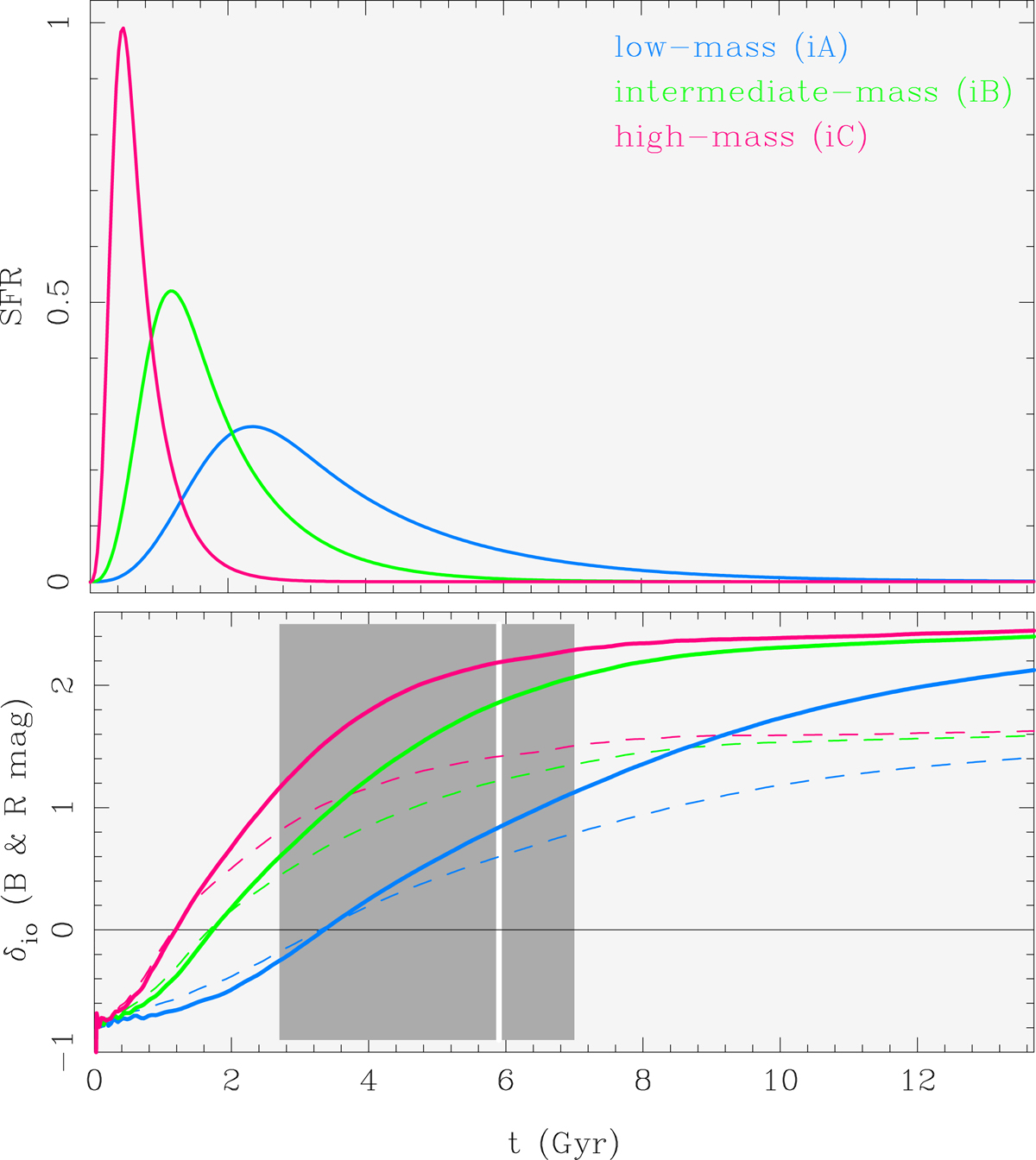Fig. 13.

Download original image
Mass-dependent SFH of bulges and resulting evolution of δio for a galaxy downsizing scenario. Upper panel: SFR parameterizations simulating a downsizing trend for galaxy bulges by assuming that their age at the peak of their SFR and their SF e-folding timescale inversely with ℳ⋆. High-, intermediate-, and low-mass bulges (iC, iB, and iA, respectively, in the classification by BP18) reach their maximum SFR at 0.47, 1.2, and 2.4 Gyr. Lower panel: evolution of δio (approximated by 2.5 ⋅ log(ψ), as in Fig. 2) in the B and R band (solid and dashed curves, respectively) for the three SFH scenarios for the bulge (upper panel) when a constant SFR for the outer disk is assumed. The shaded gray area depicts the redshift interval 0.76 ≤ z ≤ 2.3 that will be covered both by the MOONS spectrograph at VLT (0.65–1.8 μm) and the B-band filter (∼0.37–0.54 μm). The amplitude of δio at z ∼ 1 (vertical white line) depends on galaxy mass. It is moderate (∼0.85 B mag) for low-mass (< L⋆) galaxies and reaches ∼2 mag for massive LTGs in advanced stages of SF quenching.
Current usage metrics show cumulative count of Article Views (full-text article views including HTML views, PDF and ePub downloads, according to the available data) and Abstracts Views on Vision4Press platform.
Data correspond to usage on the plateform after 2015. The current usage metrics is available 48-96 hours after online publication and is updated daily on week days.
Initial download of the metrics may take a while.


